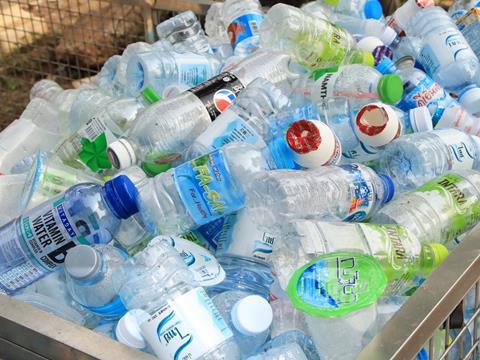
Last week, as part of our Bulletin coverage, we took a closer look at the potential implications of brands like Mondelēz, Mars, Nestlé, L’Oréal USA, and Walmart ending their involvement with the U.S. Plastics Pact. In this article, Jonathan Quinn, CEO at the U.S. Plastics Pact, gives us a different perspective on this news.
To the question posed by Packaging Europe’s recent commentary, Is this the end of the U.S. Plastics Pact?, the answer is an emphatic “No!” The work of the U.S. Plastics Pact remains strong, focused, and more critical than ever.
As the U.S. Pact nears its five-year anniversary, some headlines have focused on a small number of Activators who have stepped away. In a dynamic initiative like the U.S. Pact, changes in membership are expected as organizations shift priorities, face resource constraints, or undergo internal transitions. That’s a natural part of any broad coalition.
What’s more telling than the departures themselves is the attention they’ve received. Media is interested in changes to membership in the U.S. Pact because being part of the Pact means something. It reflects a serious, long-term commitment to advancing sustainability.
The truth is that U.S. Pact isn’t designed for box-checking or short-term wins. It’s built for companies and organizations who are ready to engage deeply, collaborate openly, and navigate the real challenges of circularity.
What matters most is not who has left the U.S. Pact, but who is staying and, more importantly, who is doubling down. We continue to have strong representation from across the entire packaging value chain and the number of organizations committing to the Pact’s 2030 targets far outweighs the handful who have stepped back.
The financial position of the U.S. Pact is stronger than it was a year ago. Participation in our workstreams is steady and, in some cases, growing. The energy we see in these pre-competitive, collaborative spaces is the “secret sauce” of the Pact: cross-sector partners working to solve tough problems together.
Across the U.S. Pact, we’re seeing collective action translate into meaningful progress. From advancing reusable packaging systems to improving the recyclability of common formats and closing gaps in collection and end markets, U.S. Pact Activators are focused on solving the challenges that matter most.
One standout example is our recent report, Overcoming Barriers to Increasing the Use of PCR in the U.S. Developed with insights from more than 100 stakeholders across the value chain, this first-of-its-kind report identifies major roadblocks like price volatility, infrastructure shortfalls, and policy uncertainty and offers clear, actionable strategies to help scale PCR use.
While this is just one example there are multiple others from focused efforts on PET thermoform recycling, to starting and leading a taskforce on advancing the recyclability of products, to providing leadership in harmonizing efforts around reusable packaging. All of these US Plastics Pact-driven initiatives and more are making meaningful progress to a circular economy for plastic packaging.
Just as important as the work itself is how we measure and report on our work. The Pact’s reporting framework plays a central role in driving progress. The U.S. Pact’s targets are aspirational by design, focusing on measurable progress rather than perfection.
So, when goals aren’t met, we don’t deflect. We explain what happened, what we’ve learned, and how we’ll improve. That kind of transparency isn’t always easy, but it is essential.
The fundamentals of the U.S. Pact haven’t changed: we set ambitious targets, we work collaboratively, and we stay focused on what matters most. This is work that has never been easy and was never meant to be. Our Activators don’t just show up —they roll up their sleeves. And even when progress is slow or setbacks arise, they choose to remain at the table. That’s the kind of leadership this moment demands.
There’s no shortcut to circularity, but there is a clear market advantage for those who stay committed. The companies leaning in today will be the ones best positioned for the demands of tomorrow.
In the first five years of the U.S. Pact, we’ve made meaningful progress. The work ahead is significant, but so is our resolve. The U.S. Plastics Pact continues to move forward with focus, urgency, and a shared belief that real change is not only possible, but it’s already underway.
If you liked this story, you might also enjoy:
The ultimate guide to the Packaging and Packaging Waste Regulation in 2025
How are the top brands progressing on packaging sustainability?
Everything you need to know about global packaging sustainability regulation in 2025
The key to increasing the use of reusable packaging in supermarkets


















No comments yet